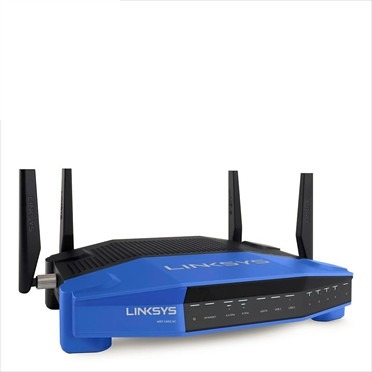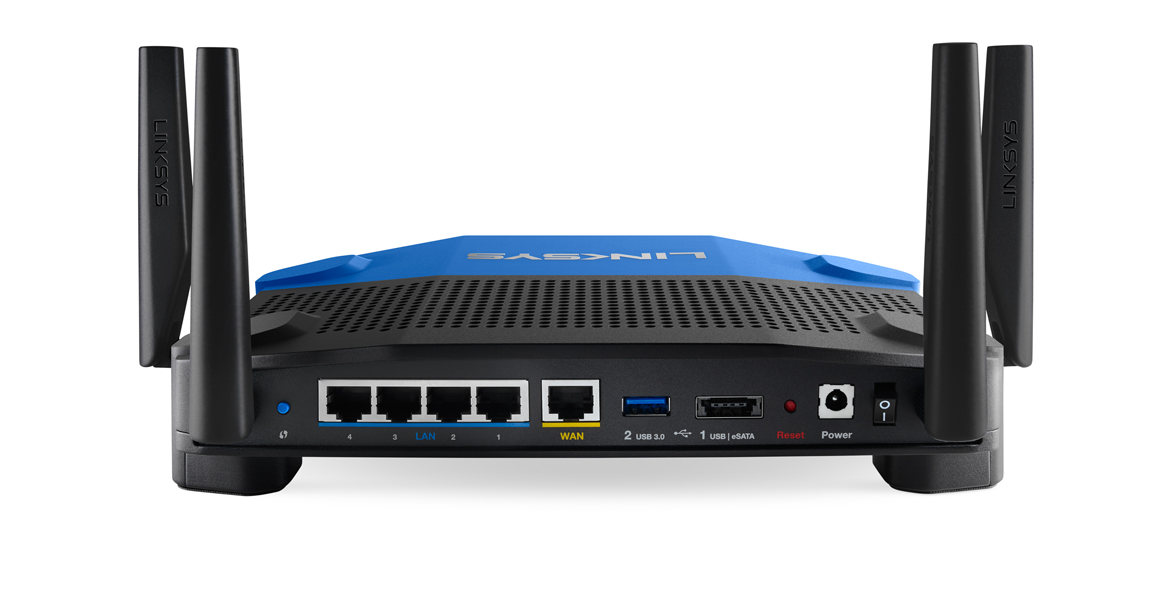

- #Linksys router wrt 1900ac how to#
- #Linksys router wrt 1900ac manual#
- #Linksys router wrt 1900ac pro#
- #Linksys router wrt 1900ac Pc#
- #Linksys router wrt 1900ac free#

The documentation has an insert with a picture of the router with a book placed on top of it, crossed out in a big, red circle. In fact, there is such concern that Linksys put a fan inside, further lending to the unit's massive size. Its internal components are built for performance, and this means it has the potential to overheat. There are also air flow vents all over the housing. You won't see such speeds with most of the mobile devices and wireless adapters you're likely to own.Īlthough it's relatively heavy, the W1900AC is still wall- and ceiling-mountable, via grooves in its rubber feet. The WRT1900AC offers other goodies, too, such as the ability to flash the firmware with soon-to-be-availale OpenWRT (giving networking geeks the potential for complete network control), excellent performance as a NAS (with a USB drive attached to its USB 3.0 port), wonderful QoS, great range in the 2.4GHz band, and easy, well-honed remote access and management.Ī caveat is in order, however, when it comes to the router's excellent performance: Testing with a second WRT1900AC router set up as a bridge produced amazing wireless throughput, the likes of which we'd never seen. But that throughput is only achieved using another 802.11ac device as a bridge. You get a lot for your coin, however, including very good performance. The unit is a big, beefy router, with a big, beefy price to match. The Linksys Smart Wi-Fi Router AC 1900 (WRT1900AC) ($349.99 at Amazon) (Opens in a new window) is without question the most ambitious consumer wireless router networking hardware available.
#Linksys router wrt 1900ac how to#
#Linksys router wrt 1900ac Pc#
#Linksys router wrt 1900ac free#
#Linksys router wrt 1900ac manual#
So my advice to Linksys would be to clean up the user interface so that people who don’t bother reading the manual can easily set up their network for 802.11ac, and clean up their documentation because other than mentioning that the WRT1900AC is 802.11ac capable, I couldn’t find any mention on how exactly to do that. As a result they could get frustrated and ditch this router for a different brand, or flood their tech support lines with questions that could easily be answered if the router’s user interface were clearer and/or the manual and FAQ provided better guidance on this front. This is an area that Linksys should consider improving because their typical users may not invest the time to experiment with these settings. After a reboot of the router and a check of my MacBook Pro, I had 802.11ac speeds. So on a hunch, I flipped this setting to Mixed.

I also did what I tell my customers to do which is to read the manual and found no assistance there. I checked their FAQ and found nothing there that could help me. Thus I figured that I was doing something wrong or I was not looking in the right place. That was baffling to me seeing as this router is capable of doing 802.11ac according to Linksys. What made the situation even more confusing was the fact that nowhere in the user interface of the router does it specify an option for 802.11ac: As I didn’t have any 802.11ac devices at the time, this was the most logical setting for me to use. That explains why I wasn’t getting 802.11ac speeds. To me, that meant that I was set up to let devices that were 802.11a and 802.11n compatible work on the 5GHz band. I found that to be weird because when I checked the router I had these options selected under the 5GHz band section of my router’s wireless configuration:

But upon my initial testing, I discovered that I was only getting 802.11n on the MacBook Pro. In reality it would likely see something north of 600 Mbps to something around 1024 Mbps because your environment may limit the actual speed that you get. If they played nice together, I could get a theoretical maximum speed of 1300 Mbps.
#Linksys router wrt 1900ac pro#
Now that I have a faster MacBook Pro, I wanted to leverage the fact that I had a Linksys WRT1900AC router that was capable of doing 802.11ac and my MacBook Pro also does 802.11ac.


 0 kommentar(er)
0 kommentar(er)
